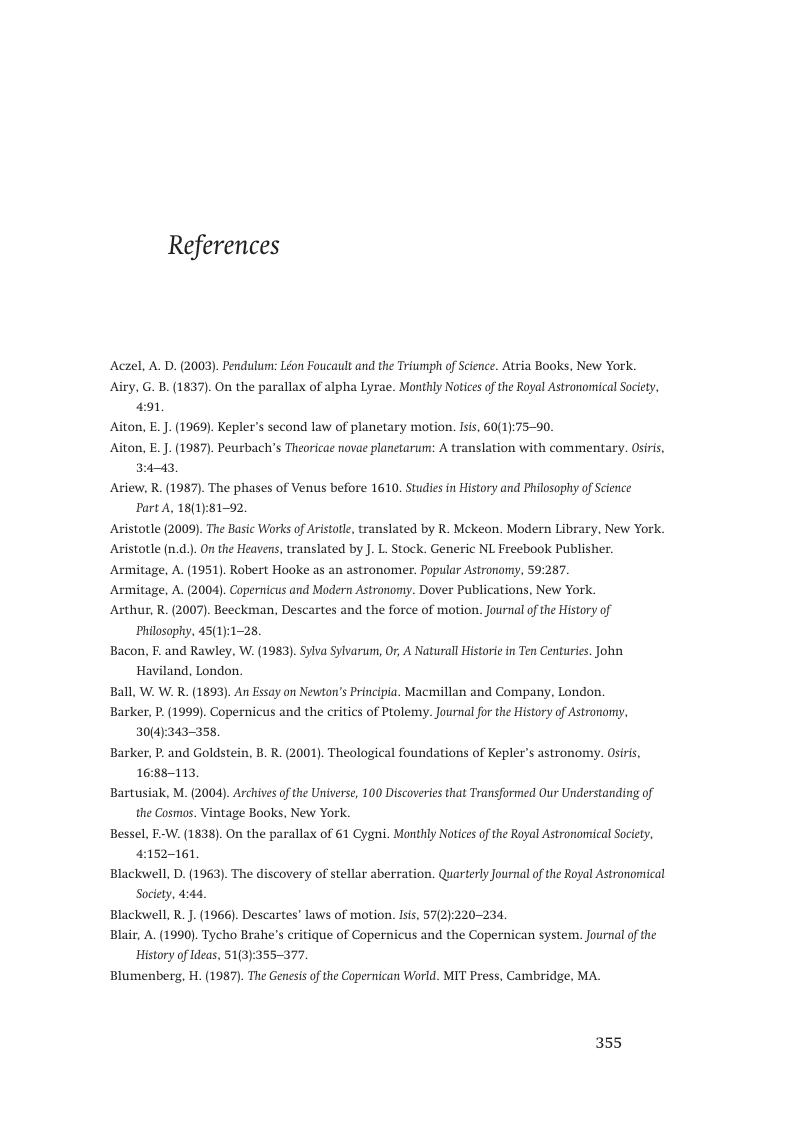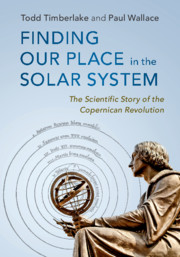Book contents
- Frontmatter
- Dedication
- Contents
- Preface
- 1 Introduction: mysterious skies
- 2 Two spheres: modeling the heavens and the Earth
- 3 Wanderers: the Moon and the planets
- 4 An Earth-centered cosmos: astronomy and cosmology from
- 5 Moving the Earth: the revolutions of Copernicus
- 6 Instruments of reform: Tycho’s restoration of observational
- 7 Physical causes: Kepler’s new astronomy
- 8 Seeing beyond Aristotle: Galileo’s controversies
- 9 The system of the world: Newton’s universal physics
- 10 Confirming Copernicus: evidence for Earth’s motions
- Appendix Mathematical details
- Notes
- References
- Index
- References
References
Published online by Cambridge University Press: 18 March 2019
- Frontmatter
- Dedication
- Contents
- Preface
- 1 Introduction: mysterious skies
- 2 Two spheres: modeling the heavens and the Earth
- 3 Wanderers: the Moon and the planets
- 4 An Earth-centered cosmos: astronomy and cosmology from
- 5 Moving the Earth: the revolutions of Copernicus
- 6 Instruments of reform: Tycho’s restoration of observational
- 7 Physical causes: Kepler’s new astronomy
- 8 Seeing beyond Aristotle: Galileo’s controversies
- 9 The system of the world: Newton’s universal physics
- 10 Confirming Copernicus: evidence for Earth’s motions
- Appendix Mathematical details
- Notes
- References
- Index
- References
Summary

- Type
- Chapter
- Information
- Finding our Place in the Solar SystemThe Scientific Story of the Copernican Revolution, pp. 355 - 364Publisher: Cambridge University PressPrint publication year: 2019



